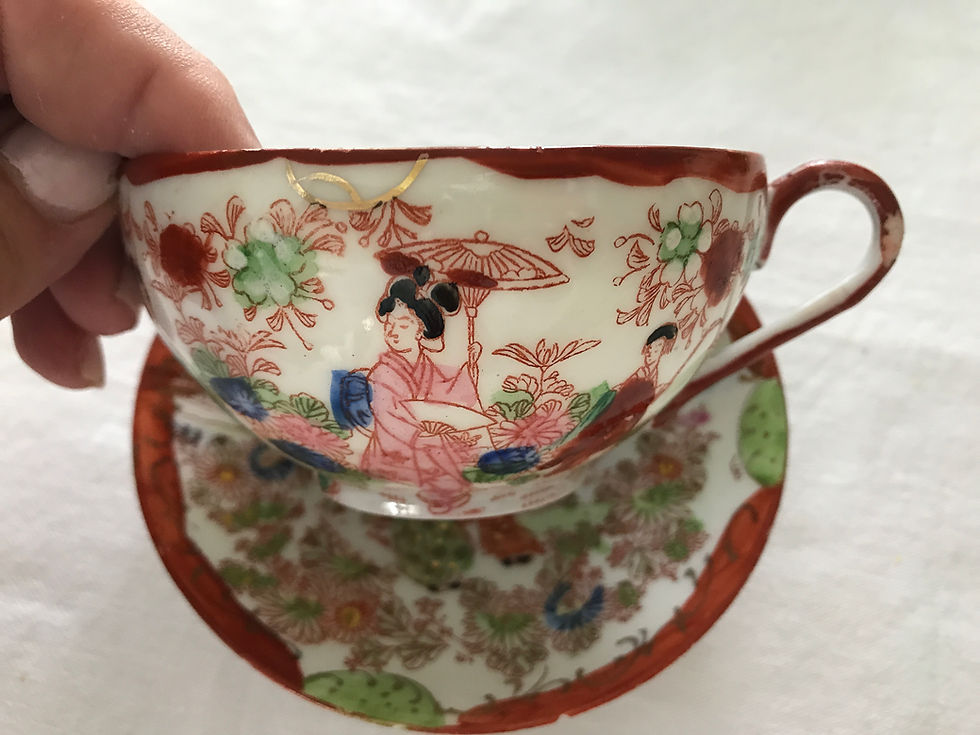Bring your best sparkle, shine or glitter to the table….feel great & shine,,,
...opens your imagination to table settings for dinner parties, lunches and teas. Get inspired and create a special occasion for yourself.

Sparkle Me****

Geisha Girl China
The tea cups are great vessels to serve green tea. I think the the tea tastes wonderful when served in these collectible, thin cups. The stencil-design pieces are colorful and fun to collect. The red printed motifs are usually embellished with detailing in overglaze enamels in blues, gold, reds, greens and yellows. Gold gilt is sometimes used to decorate handles and rims.
These wares began production in the last quarter of the 19th century and continued to be manufactured into the early 1950s (Litts 1988:8, 11). Most were produced prior to the beginning of World War II, although they continued to be made during the period of Japan’s occupation by Allied forces (1945-1952). The printed Geisha Girl porcelain was inexpensive and during its earlier period often sold in 'dime stores' and used as free premiums. Cups and saucers were often "free" give-aways inside large containers of Japanese tea. In its better versions, it was a popular gift.
A general rule of thumb to follow for marked pieces of geisha girl porcelain is as follows: vessels marked “Nippon” dated between 1891 and 1921, items marked “Japan” or “Made in Japan” post-date 1921 (Litts 1988:58). Presented in catalogs and newspapers by several Western companies dating to around 1910-1915, describing Geisha Girl wares as "Seto Ware decorated in Kobe". Porcelain marked “Made in Occupied Japan” date between 1945 and 1952.































